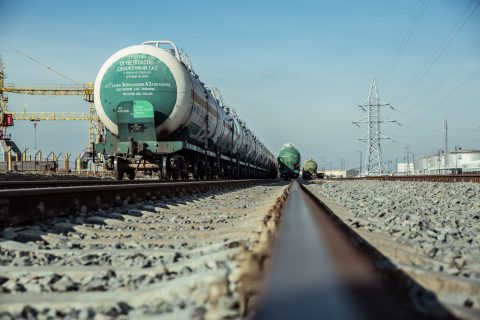Chinese port of Ningbo fully operational again

China has fully reopened a major container terminal in Ningbo, one of the world’s busiest ports, after it was closed two weeks ago due to an employee’s corona infection. However, the impact is still felt with congestion in several ports relevant on the New Silk Road.
Bloomberg news agency reported this on Wednesday morning. The reopening means that one of the world’s busiest ports will be fully operational again in the foreseeable future. One of the terminals was closed for two weeks by order of the authorities due to a corona outbreak, because dock workers had to be quarantined.
Relevant for New Silk Road
The port of Ningbo, one of the world’s largest ports, is a relevant port for rail freight traffic too. It is one of the ports where cargo is reloaded, to continue the journey by vessel to Japan or Korea. The other way around, cargo originating from Far East markets are loaded on the China-Europe train here. Alternatively, cargo is further shipped to the Russian port of Vladivostok for land transit via the Trans-Siberian corridor.
The Chinese authorities still apply a zero tolerance approach: with a single infection, everything is pulled out to prevent a further outbreak. For example, the port of Shenzhen, which together with Shanghai, Singapore and
Congestion in the region
Ningbo makes up the top 4 largest container ports, was closed for about a month in Spring due to a number of corona infections. The terminal in question accounts for about a quarter of the container throughput of the port of Ningbo. The terminal was closed on August 11 when an employee was found to be infected with the Delta variant of Covid-19. The partial closure of the world’s third-busiest container port exacerbated congestion at other key Chinese ports such as Shanghai, Xiamen and Hong Kong as ships were diverted. Also these are important intermodal junctions on the New Silk Road.
Although most of the affected traffic is ocean shipping, there are some successful sea-rail services that run through the port of Ningbo. An example is the service by MSC connecting Europe, Japan and Korea, amongst others via Ningbo, or the recently launched Finland Bridge by FESCO Transportation Group, RZD Logistics and Nurminen Logistics.
Bottleneck again
The volume of exports in China is expected to decrease this month compared to last month due to the problems in Ningbo, while imports are likely to stagnate. This was forecasted by the German think tank The Kiel Institute for the World Economy in its trade report on China.
“While there have been tentative signs of recovery in recent weeks, the closure of the terminal in Ningbo is now once again exacerbating bottlenecks in container traffic”, said Vincent Stamer, head of the Kiel Trade Indicator. If the goods trade with China does not recover quickly, he believes the crisis also threatens to affect the Christmas volumes. This can result in Christmas items becoming more expensive or not available at all.
Authors: Bart Pals and Majorie van Leijen
You just read one of our premium articles free of charge
Want full access? Take advantage of our exclusive offer





